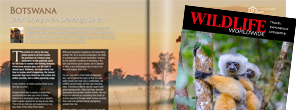Virpazar & Lake Skadar

The tiny fisherman’s village of Virpazar lies on the north-western shores of Lake Skadar and is a gateway to this Ramsar site. The lake has recorded over 270 species of bird including Dalmatian pelicans, great crested grebes, reed warblers, pygmy cormorants, great white heron and kingfisher. Find Out More
- Where: South-west Montenegro
- Ideal for viewing: Dalmatian pelican, chamois, pygmy cormorant, whiskered tern, squacco heron
- Excellent for: Birdwatching ,











